
Hungary – buses and coaches in the HU-GO system from April 1
Starting from April 1, buses and coaches with a gross vehicle weight of 3.5 tonnes, can be properly registered as buses in the Hungarian electronic toll collection system (HU-GO) by entering an appropriate vehicle type, as stipulated in the legislation amended at the end of February.
Lorries have been using HU-GO for over 10 years.
Coach and bus companies have to:
✔️ set up the company’s account and register coaches/buses on the hu-go.hu website
✔️ purchase or instal an on-board unit (OBU) that can (also) be used to make toll payments in Hungary. After registering, a platform of prepaid accounts will automatically be created. In this way, the company will have a contractual relationship with Hungary’s National Tax and Customs Administration. EASY on-board units can be purchased via the following website.
❗ VERY IMPORTANT❗ Operators of buses over 3.5 t already registered in the HU-GO electronic toll system are requested to refrain from the use of the HU-GO e-toll system for toll payments until 31 March and not to use their OBUs.
Vehicles not registered in the HU-GO system, can only travel in Hungary after purchasing a route ticket, which is only valid for one-way journey within 24 hours of the purchase date. The price of such a ticket is non-refundable.
There are two bus categories that can be selected when entering vehicle type during the registration process: M2 buses (over 3.5 tons up to 5 tons) and M3 buses (over 5 tons). The infrastructure charge included in the toll is based on the technically permissible maximum laden weight, while the second component, the external cost charge, depends on the number of axles and the environmental classification (EURO standard).
Operators of coaches/buses with a permissible total weight of up to 3.5 tonnes will still be able to pay for road use by purchasing an electronic vignette issued by the National Toll Payment Services, and starting from April 1, they will be classified as category D2 vehicles.
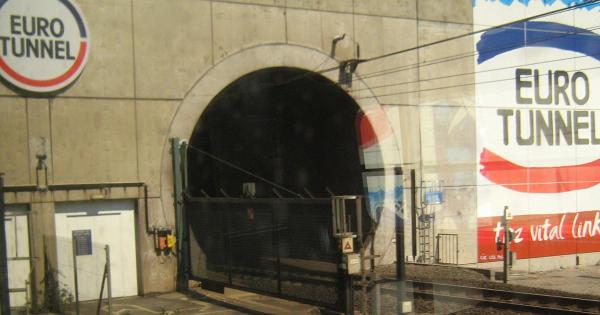
Le Shuttle: Planned overnight service suspension on 16/17 March
As part of the maintenance schedule for 2024, an essential upgrade of engineering systems that enable the control and management of fixed equipment in the tunnels is planned overnight from Saturday, the 16th, to Sunday, the 17th of March.
The LAST freight shuttle departure on Saturday night will be:
► From Folkestone: at 23:22
► From Calais: at 23:22
The FIRST freight shuttle departure on Sunday morning will be:
► From Folkestone: at 05:52
► From Calais: at 05:52
Local times
In order to minimise the impact on businesses, additional departures have been planned as soon as LeShuttle service resumes. The timetable for this period can be viewed or downloaded from eurotunnelfreightcom ⬅
If you wish to travel on the last departure please check-in no later than 60 minutes before the planned departure time. Both Calais and Folkestone terminals will be closed during this time. Le Truck Village and LeShuttle Freight Truck Park in Calais remain open during this closure. Drivers can check parking availability in real time via the Driver Info app.
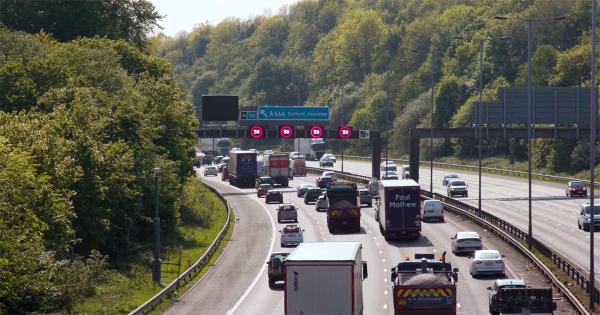
England: closure of M25 – diversion routes
The M25 will be closed for a full weekend for the first time ever as a major project progresses to make journeys safer and reduce pollution. This will be the first of five closures between now and September 2024. Those travelling to Gatwick and Heathrow airports and Channel ports may be affected.
The Junction 10 improvement scheme will see an increase in the number of lanes to make journeys safer and improve traffic flow. It will also make it easier and safer to enter and exit the M25, provide safer entry roads for Wisley, Pyrford, Old Byfleet and RHS Wisley.
The local diversion route below will be in place which is the same for both directions:
Junction 10 – Junction 11: North bound A3 to Painshill Junction, A245 towards Woking, and then A320 to M25 Junction 11.
Junction 11 – Junction 10: A320 south towards Woking, A245 towards Byfleet and Painshill junction, Southbound A3 to Junction 10.
Taking the M25 in the other direction to avoid our closure is also an option.
The next full closure of the M25 is due to take place in April to allow for the installation of the new Clearmount bridleway bridge. Dates are subject to change.

Tirol: 150 days with HGV inspections in 2024
Approximately 2.4 million lorries crossed the Brenner Pass along the A12 motorway in 2023. This is why the Tyrolean authorities have decided to continue road checks of HGV transit traffic to ensure road safety.
This year, ASFINAG’s mobile inspection facility will be used on Tyrolean roads on 150 days, 38 more days than were originally planned. The regional parliament has decided to allocate approximately EUR 55,000 for this purpose. Every year, the Austrian motorway authority, together with technical inspectors and the police, test over 4,000 trucks. Inspectors check everything, from brakes to axle load and emission levels. ❗Inspections take place at checkpoints in Kundl and Radfeld, on the Brenner Pass, along national roads in Nauders, Leisach and Musau, and at checkpoints located on the lower-level road network and at motorway rest areas.
Technical faults pose the biggest risk to road safety, especially under unfavorable weather conditions. It is therefore important that lorries are roadworthy and their loads are properly secured. In addition to road-side checks, during which traffic police check the driver’s documents, compliance with driving and rest times, winter equipment and load securing, it is also important that the technical condition of vehicles should be carefully verified emphasizes René Zumtobela, a member of the Tirolean parliament responsible for transport.
In 2023, traffic inspectors worked a total of over 64,300 hours, almost 2,000 hours more than in 2022. Nearly 11,500 technical faults were detected. Inspections conducted in Kundl and Radfeld resulted in 3,700 warnings issued to drivers found in violation of HGV driving bans (weekend, night and sector driving bans), and in over 2,300 cases drivers were banned from continuing their journey. The modernization of the checkpoint in Radfeld will begin this year. In addition to infrastructural improvements, the facility will be expanded to increase inspection capacity and efficiency.
In terms of the number of HGV driving bans and the frequency of traffic inspections, Tyrol is one of Europe’s leading regions. Its authorities believe this is the only way in which existing bans can be effective. The number of detected violations is constantly increasing, which sends a clear signal to other drivers that the authorities mean business and will not tolerate any infringements in this area emphasizes René Zumtobela.
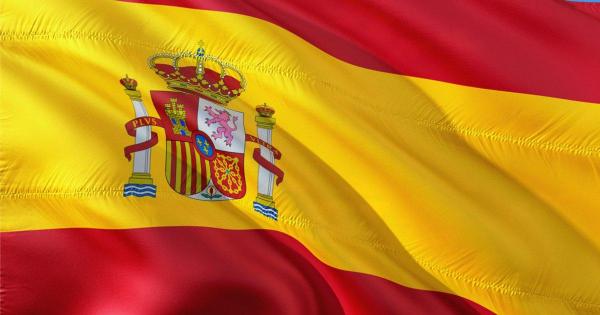
Tring to understand the incomprehensible: Spanish HGV driving bans
Spanish restrictions on the movement of heavy goods vehicles for 2024 retain restrictions already in force in 2023.
Spanish HGV driving bans are among the most extensive and complex ones – the relevant regulation is over 60 pages long! In addition to general restrictions to all HGVs, restrictions for vehicles transporting hazardous materials or abnormal loads, there are additional prohibitions related to, for example, sports events (e.g. cycling competitions, motorcycle Grand Prix) or pilgrimages.
➡️ Compared to last year, the Spanish transport authority DGT has not made big changes to the traffic restrictions for 2024, retaining general restrictions on the A8 between Cantabria and the Basque Country that apply every Saturday, Sunday and on public holidays during the summer period (July and August).
➡️ The restrictions on the N-631 in Zamora aimed at ensuring traffic flow between Spain and Portugal have been extended to all Fridays, Saturdays, Sundays and public holidays in June, July and August.
➡️ Overtaking bans are retained on sections of some roads during the summer, in particular on AP-1, AP-4 and A-49, with the addition of a ban on April 1 and on Sundays and holidays in July and August on the A-62.
➡️ the overtaking ban for lorries on certain roads, introduced last year, is also retained, specifically:
◾ Every Saturday in June, July and August on the A-49 motorway (from Camas to Huévar from 9 a.m. to 11:00 AM and from 2:00 PM to 8:00 PM. and from Huévar to Bollullos from 9:00 AM to 8:00 PM)towards Huelva and on AP-4 from Dos Hermanas to Jerez from 9:00 AM to 11:00 PM and from 1:00 PM to 8:00 PM towards Cadiz.
◾ Every Sunday and public holidays in June, July and August on the A-49 from San Juan del Puerto to Seville, towards Seville from 10:00 AM to 3:00 PM, on the AP-4 from Jerez to Dos Hermanas, towards Seville from 10:00 AM to 6:00 PM and on the A-62 from Cubillas de Santa Marta to Tordesillas, in both directions, from 3:00 PM to 11:00 PM.
◾ On Sundays in July (7, 14, 21 and 28) and August 11 on the AP-1 from Rubena to Pancorbo, towards Vitoria from 4:00 PM to 9:00 PM, as well as on August 15 and 21, November 1 and December 6, from Ameyugo to Ruben, towards Burgos, from 4:00 PM to 9:00 PM.
❗ Each year, separate regulations for HGV traffic are published by Catalonia and the Basque Country. After the Autonomous Community of Navarre took over the responsibility for traffic managment, the local authorities have published their first resolution that introduces HGV restrictions. For more information on restrictions in Spain, visit www.trafficban.com/country.spain.moreinfo.75.pl.html
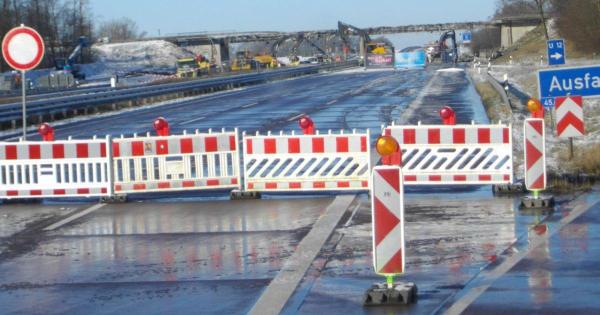
Germany: A27 between the Uthlede and Hagen junctions closed until further notice
The A27 motorway, which connects Bremen, Bremerhaven and Cuxhaven, was completely closed on Wednesday, February 21, after a rusted ditch culvert under the motorway had caused the road surface to sink. On Monday, February 26, work will start to replace the existing corrugated steel pipe with a pipe made of fiberglass-reinforced plastic. After the renovation, it will no longer be necessary to check whether depressions have formed under the road because the road structure will be completely renewed.
On the A27 between Uthlede and Cuxhaven there are six ditch culverts made of corrugated steel, like the one near Hagen. All of them will now be to examined. At the same time, plans are being made for a new structure. The installation of a fiberglass-reinforced plastic pipe is therefore only a temporary solution, which will make it possible to continue renovation work with only one lane closed at a time, which means the motorway does not have to be completely closed as is currently the case.
The following diversions are currently available for vehicles with abnormal loads:
◾Between Bremen and Bremerhaven the former Bundesstraße 6, now L135, is used as a connection between the A27 Ihlpohl and Bremerhaven-Süd junctions. Alternatively, one should not enter or exit the A27 motorway at Bremerhaven-Süd, but continue via the B6 and B71 to the Bremerhaven-Wulsdorf junction. The same route should be used in the opposite direction.
◾Between Oldenburg and Bremerhaven, the connection follows along the tunnel under the Weser river from the A29 motorway in Oldenburg via the A293, B211, B212 and B437 (the Weser Tunnel) to the A27 Stotel junction. The same route should be used in the opposite direction.
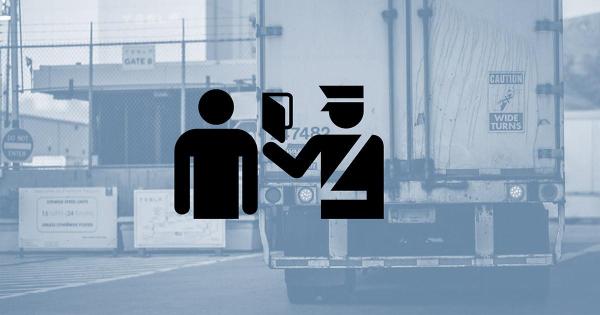
Germany and Austria prolong their border controls
The German Ministry of the Interior has notified the European Commission about the extension of temporary checks along the country’s internal land borders with Poland, the Czech Republic and Switzerland until June 15. Austria has done the same along its land border with the Czech Republic until April 16.
Germany
Border controls have been prolonged to combat smuggling and limit illegal migration. By virtue of Article 25 of the Schengen Borders Code, temporary controls will be in place until June 15. Border checks are also taking place at the German-Austrian border and will last until May 11.
Border monitoring activities of the German Border Guard are carried out at different points and times along smuggling routes, depending on the current situation. Since October 16, 2023, in the course of temporary controls along the border with Poland, the Czech Republic, Austria and Switzerland, the federal police have detected almost 23,000 unauthorized entries and made 13,000 interventions to prevent entry or terminate illegal stay. The number of unauthorized entries detected nationwide dropped from around 21,000 in September 2023 to around 6,700 in January 2024. 564 smugglers were arrested during this period.
Austria
In accordance with the regulation of the Federal Minister of the Interior, checks on the land border with the Czech Republic will continue until April 16.
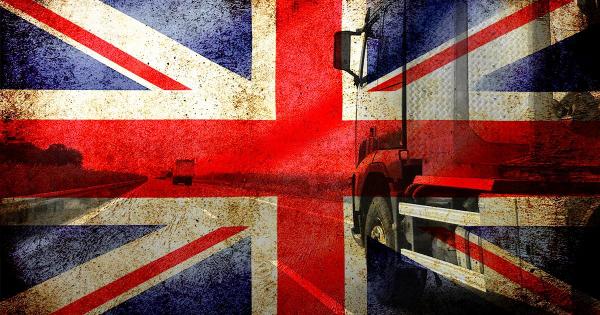
Five weeks of closures of A249 in Kent
The A249 in Kent is set to be closed for five weeks as part of the M2 Junction 5 improvement scheme as we construct the new A249 carriageway to the south of Stockbury Roundabout.
To safely carry out this work, the southbound A249 carriageway (towards Maidstone) between the Stockbury Roundabout and Church Hill will be closed for five weeks. These closures will be put in place from Friday 23 February to Saturday 30 March 2024. To minimise disruption, two lanes will be kept open heading towards the roundabout from Maidstone.
There will also be an overnight closure on the northbound carriageway between the M20 Junction 7 and Stockbury Roundabout from 8pm Friday 16 February to 5am Monday 19 February 2024 for preparation work.
The same stretch of road will also be closed overnight from Sunday 10 March to Monday 11 March 2024 and again overnight on Thursday 28 March and Friday 29 March between 8pm and 5am each night.
At the same time, National Highways will also take the opportunity to build the new London-bound exit slip road. This should also encourage drivers to stay on the M2 and reduce traffic arriving at the Stockbury Roundabout while the southbound A249 is closed. This slip road will also be closed for the duration of this five-week period.
Closure information
❎ Friday 16 to Monday 19 February – A249 northbound weekend closure
The A249 northbound will be closed between the M20 junction 7 and the Stockbury Roundabout from 8pm Friday 16 February to 5am Monday 19 February for preparation work.
Diversion:
Signed diversions via the M20, A229, M2 and A249. For non-motorway traffic, please use the A249, A229, A2 and A249.
❎ Monday 19 February to Saturday 30 March – closure of Church Hill exit
When the A249 northbound reopens on Monday 19 February, the Church Hill exit will remain closed until 5am Saturday 30 March. This will allow to build the new junction with Church Hill.
Diversion:
Use Chalky Road to join the A249.
❎ Friday 23 February to Saturday 30 March – A249 southbound closure
The A249 southbound will be closed from the Stockbury Roundabout to Church Hill, along with the M2 junction 5 London-bound exit slip, from 8pm Friday 23 February to 5am Saturday 30 March. There will be no access to the A249 from Oad Street or South Green Lane during this time.
Diversion:
a signed diversion will be in place via the M2, A229, M20 and A249. For non-motorway traffic, please use A249, A2, A229, A249.
To leave the M2 London-bound and join the A249 towards Sittingbourne, stay on the M2 to junction 4 and return to junction 5 on the coastbound carriageway.
❎ Sunday 10, Thursday 28 and Friday 29 March – A249 northbound overnight closures
The A249 northbound will be closed between M20 junction 7 and the Stockbury Roundabout from 8pm Sunday 10 March to 5am Monday 11 March to move northbound traffic onto the southbound carriageway.
The A249 northbound will then be closed between M20 junction 7 and the Stockbury Roundabout overnight again on Thursday 28 March and Friday 29 March between 8pm and 5am each night.
Diversion:
please use the M20, A229, M2 and A249. For non-motorway traffic please use the A249, A229, A2 and A249.
When the road reopens at 5am on Saturday 30 March, both sides of the A249 will be open.
While the A249 is closed, work will also be conducted on the southern links to the upgraded junction, including:
• The A249 southbound (towards Maidstone) exit from the Stockbury Roundabout
• The northbound (towards Sheppey) A249 on to the Stockbury flyover.
• The South Green link road that will connect South Green Lane and Oad Street to the Stockbury Roundabout.
• The M2 London-bound exit slip.
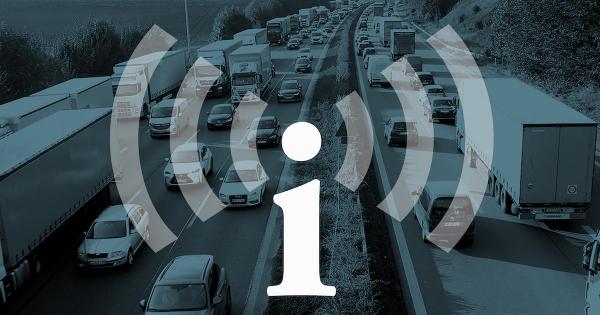
Germany: Weekend closure of the A7 – recommended diversion routes
Owing to the construction of the new A7/A26 HH-Hafen intersection, the A7 will be completely closed in both directions between the HH-Heimfeld (32) and the HH-Volkspark (27) junctions from 10 PM on Friday, February 16, until 5:00 AM, on Monday, February 19.
Slip lanes at the junctions HH-Volkspark (27), HH-Bahrenfeld (28), HH-Othmarschen (29), HH-Waltershof (30), HH-Hausbruch (31), and HH-Heimfeld (32) will be closed from 9 PM on Friday, February 16.
Recommended diversion routes:
Long-distance traffic is diverted along the A1, A21 and B205 in both directions.
❎ Traffic from the south from the Bucherholzer intersection (43) / Horster intersection (40) is diverted through the Maschener Kreuz intersection (39) and then along the A1 motorway
❎ Traffic from the north, from the Neumünster-Süd junction (15) is diverted along the B205 road
The diversion route is indicated by the traffic control system (VMS panels).
Diversions in the city center and southbound diversions:
❎ Traffic towards Hannover – drivers should follow the “Elbbrücken” signs at the HH-Stellingen junction (26) on the B5 to A1 and A7
• along the streets Kieler Straße -Sportplatzring – Koppelstraße – Julius-Vosseler Straße Vogt-Wells-Straße (Elbbrücken) – Osterfeldstraße – Lokstedter Weg – Eppendorfer Marktplatz – Heinickestraße – Hudtwalkerstraße – Winterhuder Marketplatz – Barmbeker Straße – Bachstraße – Her derstraße – Winterhuder Weg – Land wehr – Sievekingsallee to the Horner roundabout, then along A24 to A1 towards the Elbe bridges
• or continue along the B5 via Burgstraße – Grevenweg via Eiffestraße to the HH-Billstedt junction (33) along the A1 motorway towards Bremen
❎ Southbound traffic towards Altona-West is diverted along the U33 at the HH-Volkspark junction (27) and at the Schnackenburg / Binsbarg intersection turns left towards Altona.
❎ Alternative routes are also available to reduce traffic congestion:
• from the HH-Schnelsen-Nord junction (23) through the airport ring road B432 and B433 along Alsterkrugchaussee,
— from there along the Ring 2 road towards the east,
— or continue along the B5 towards Elbbrücken, for example towards the Centre
• from the HH-Schnelsen junction (24) on the B447, follow the signs for Elbbrücken or Centrum.
Diversions in the city center and northbound diversions:
❎ Towards Flensburg, traffic at the HH-Heimfeld junction (32) is diverted via the U7, following the “Elbbrücken” signs.
• Stader Straße – Buxtehuder Straße – Hannoversche Straße, and then along Neuländer Straße through the HH-Harburg junction onto the A1
• from there continue along the B75, first following the signs for “Flughafen”, then along the B5 from Barmbeker Straße and Vogt-Wells-Straße towards the A7 via the HH-Stellingen junction (26)
• or continue along the eastbound A1 motorway to the Horner roundabout and then onto the A24
• or to the HH-Billstedt junction (33) along the B5 towards HH-Centrum
❎ Traffic from the south towards the port can take the U21 diversion at the HH-Heimfeld junction (32) towards the port.
For traffic from Lüneburg/Uelzen towards Lübeck or Kiel, the following diversion is recommended:
❎ From the A39 via the Handorf junction (5), then take the B404, A25, A1 towards Lübeck or the A21 towards Kiel.
For traffic from from Lüneburg/Uelzen towards HH-Centrum the following diversion is recommended:
❎ From the A39 via the Handorf junction (5) then take the B404, A25, A1 towards Lübeck and at the HH-Billstedt junction (33) on the B5 towards HH-Centrum or via the A24 from the HH-Ost junction (31).
Abnormal loads
Vehicles carrying abnormal loads must, if possible, avoid the area affected by the A7 closure, since there are no possibilities of travelling in either direction. Traffic restrictions for vehicles carrying abnormal loads will be clearly indicated in front of the following parking areas:
❎ Southbound traffic:
A7: Aalbek; Holmmoor; Bönningstedt
A23: Steinburg; Rantzau
❎ Northbound traffic:
A7: Harburger Berge; Seevetal
A261: Rosengarten.

Closures of M25 and A3 closures as junction 10 project enters next phase
National Highways is warning road users who use the M25 and A3 in and around Surrey about weekend closures that will take place throughout the year.
Junction 10 on the M25 – the interchange with the A3 at Wisley – is one of the busiest in the country and experiences large queues and heavy congestion on a daily basis. It also has one of the highest recorded collision rates across England’s motorway and major A roads nationally. This project will reduce collisions by around a third but also create a better connection and smoother traffic for the 270,000 drivers who use it every day.
For the safety of road users and the operatives undertaking the work, a number of weekend closures of the M25 and A3 in Surrey will be needed throughout the year to enable the works to be completed safely and efficiently. The first closures will take place in February and March:
✅ A3 between Send and junction 10 (Wisley): Full carriageway closure, both directions – from 9pm on Friday 23, to 6am on Monday ,26 February. Bridge demolition work.
✅ M25 between junction 11 (Chertsey Interchange) and junction 10 (Wisley): Full carriageway closure, both directions – from 9pm on Friday, 15 March, to 6am on Monday, 18 March. Bridge demolition and gantry installation.
Further closures of the M25 and A3 are planned throughout the year. National Highways will be sharing the detailed information on the scheme website to keep road users informed. Due to the nature of the works, all closures are subject to change if events outside of National Highways control occur – such as adverse weather conditions. National Highways M25 junction 10 upgrade is expected to be complete in summer 2025.